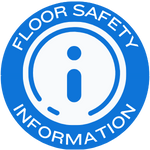ANSI A326.3 is the ONLY Standard to Follow
The manufacturer of the BOT-3000E digital tribometer is Regan Scientific Instruments of Carrollton (Dallas), Texas. The President of Regan is also the President of Walkway Management Group, Peter Ermish. Walkway Management advises against the use of the ANSI B101.3 and B101.1 Test Method, and here’s why according to Mr. Peter Ermish.
“Until recently, there were four American National Standards Institute (ANSI) standards for measuring the COF of walkways using the BOT 3000E tribometer. The following developments have now, effectively reduced that number to one:
ANSI A326.3-22
“1. The standards development committee that created the A137.1 and A326.3 standards is ANSI A108. In 2017, ANSI A108 incorporated the ANSI A326.3 measurement method standard into the A137.1 Standard which covers the full specification for manufacturing ceramic tile. Although the internet has many references to measuring slip resistance per ANSI A137.1, that standard itself calls for using ANSI A326.3 which is a method valid for all hard surface floors and not just ceramic [tile]. Effectively, ANSI A326.3 is the one standard needed for both laboratory and field testing of hard surface flooring.
The Standard now identifies five categories of which the surface tested shall be placed in.
The five product use categories are as follows:
-
Interior, Dry (ID)
-
[DCOF 0.42 or greater]
-
Possible Areas of Use: Shopping malls, hotel lobbies, office buildings, showrooms, home interiors without water sources.
-
-
Interior, Wet (IW)
-
[DCOF 0.42 or greater]
-
Possible Areas of Use: Entry Foyers, Public Restrooms, Grocery Stores, Front of House of Restaurants. Any area that can be walked upon with wet shoes.
-
-
Interior, Wet Plus (IW+)
-
[DCOF 0.50 or greater]
-
Possible Areas of Use: Public Showers, Interior Pool Decks, Locker Rooms, Covered Exterior Areas, Steam Rooms.
-
-
Exterior, Wet (EW)
-
[DCOF 0.55 or greater]
-
Possible Areas of Use: Level Outdoor Living Spaces, Pool Decks, Walkways, Patios and Sidewalks.
-
-
Oils/Greases (O/G)
-
[DCOF 0.55 or greater]
-
Possible Areas of Use: Areas regularly exposed to automotive fluids, back of the house fast food or family style restaurants where oil, grease and fats may be present.
-
NFSI’s ANSI Accreditation Has Been Terminated
“2. In January 2020, the National Floor Surface Institute [NFSI] announced that their ANSI accreditation to develop floor safety standards has been terminated. The two NFSI/ANSI standards for measuring floor slip resistance, B101.1 and B101.3 had both missed their respective deadlines (2009 and 2012) to be revised/renewed by the NFSI and have been, until January 2020, in an uncertain status. With the termination of the NFSI/ANSI accreditation, there can no longer be a renewal and those two standards effectively lapse.
“With these developments, the ANSI A326.3 standard for measuring the Dynamic Coefficient of Friction (DCOF) emerges as the only ANSI standard for measuring floor traction.
There is no longer any ANSI standard for measuring the Static Coefficient of Friction (SCOF), thus completing the transition in the United States away from the SCOF method to the globally recognized DCOF method.“
ANSI B101.1 was a method for assessing static coefficient of friction (SCOF) using the BOT-3000E. As discussed above, static friction applies only to pedestrians who are standing still and should not be used to assess the safety of moving pedestrians. This is why the ASTM C1028 SCOF method was withdrawn by the ASTM in 2014, and why the ANSI/NFSI B101.1 was allowed to lapse.






